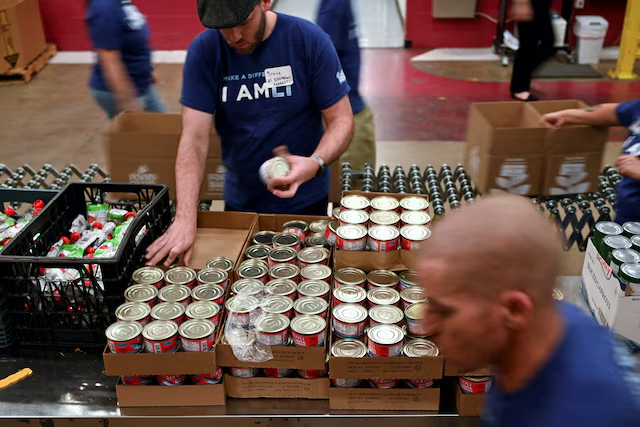News
U.S. Food Banks Brace for Surge in Demand as Shutdown Threatens Federal Benefits

In Huntington, West Virginia, Cynthia Kirkhart, CEO of the Facing Hunger Foodbank, has already had to explain to clients this year why the organization began rationing bags of potatoes.
The food bank — which also serves households in Kentucky and Ohio — has been forced to scale back its distributions due to rising food costs and surging demand that have stretched its budget thin.
Now, with a federal government shutdown threatening to halt November benefits for roughly 300,000 West Virginians who rely on the Supplemental Nutrition Assistance Program (SNAP), commonly known as food stamps, Kirkhart says there’s little more they can do.
“If you take SNAP dollars away, people have no other resources left,” she said. “We’re really in trouble.”
Food banks and anti-hunger organizations across eight states told Reuters they fear they won’t be able to meet the expected surge in demand if November SNAP benefits aren’t distributed. The shutdown — now the second-longest in U.S. history — has prevented Congress from funding programs that support more than 41 million Americans.
Hunger in the U.S. has already been rising for years. The Trump administration has cut some federal food bank funding and tightened work requirements for SNAP, which could push some recipients out of the program.
State officials warned this week that hunger could worsen if SNAP benefits lapse. The shutdown has also put at risk assistance for nearly 7 million participants in the Special Supplemental Nutrition Program for Women, Infants, and Children (WIC).
The U.S. Department of Agriculture said the funding impasse marked a “critical moment for Senate Democrats,” who have blocked a spending bill in an effort to prevent higher healthcare costs for millions of Americans. Democrats and Republicans have continued to blame each other for the shutdown.
Preparing for Impact
In recent years, food banks have already seen record demand as inflation in food prices and the lasting effects of the COVID-19 pandemic have strained household budgets.
According to Feeding America, the national food bank network, more than 50 million people received food from banks, pantries, and other charities in 2023 — up from about 40 million in 2019.
Providers have ramped up fundraising, cut back on hours, and reduced offerings to keep up. But their mission, they emphasize, is to supplement government aid — not replace it.
At MANNA FoodBank in Mills River, North Carolina, CEO Claire Neal said demand has reached an all-time high as the community rebuilds after Hurricane Helen, which also damaged the group’s warehouse.
“The truth is, we can’t do this alone,” Neal said. “For every meal we provide, SNAP provides one too. We can’t fill that gap — charity cannot replace government assistance.”
Some organizations are still trying to prepare financially ahead of a possible November surge. Grace Bonilla, president and CEO of United Way of New York City, said her organization has launched an emergency fund to quickly deliver cash to low-income families if needed.
“The lines at food banks are going to get longer,” Bonilla said. “We’re simply bracing for the impact.”
No Federal Action Yet
This week, mayors and House Democrats urged Agriculture Secretary Brooke Rollins to tap the SNAP contingency fund — which covers about 60% of one month’s benefits, according to the Center on Budget and Policy Priorities — to pay for November assistance.
The USDA said Friday it would not use those reserves, choosing instead to keep them for natural disasters and other emergencies.
With no federal relief in sight, some states have stepped in.
California and New York have pledged to send money to food banks, while Virginia declared a state of emergency on Thursday to fund November benefits. Others, however, say they have few viable options.
Alaska’s Department of Health said on its website that while it explored using state funds to cover benefits, it found the move “impossible.”
“Reprogramming the federal system to draw from state treasury funds isn’t feasible due to vendor and system timeline constraints,” the department said.
